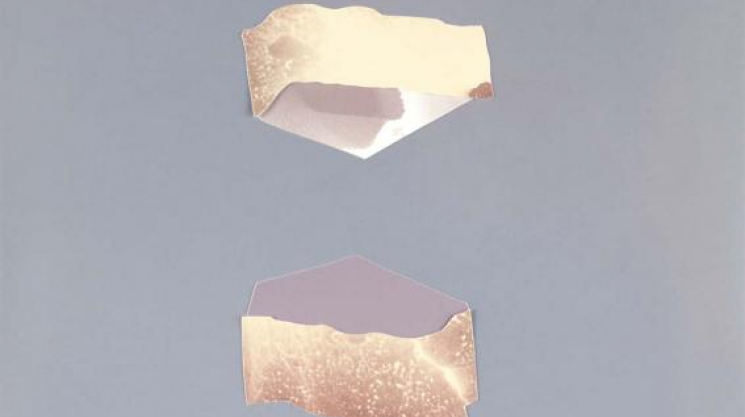
Fri, 06/01/2012 - 09:39 by Douglas Haddow
Laurie Kang: Empty Vessels Make the Most Noise
The work of Toronto-based artist Laurie Kang often blurs the boundaries between image and object; it can’t quite be categorized as photography, collage, sculpture, or installation. For her exhibit at the CONTACT Photography Festival, she’s showing two new bodies of work that break photography down to its essentials – light, paper, and chemicals – to produce elegant abstractions.
Kang’s Studio Portraits are all glossy, poster-sized (26” x 40”) c-prints mounted on dibond that, instead of hanging from the wall, lean against it on small, custom-built shelves. Kang produced them through a process of experiment and improvisation: she hung a backdrop of black photographic paper and then played with bouncing light onto it with studio lights and reflectors, photographing the results.
On each of the dark, glassy surfaces of the prints you can see traces of emergent forms. Some are murky and shroudlike, barely discernable in the enveloping shadows, while other ones feature brighter areas of illumination that shimmer with golden, metallic tones, like glowing eyes or a cache of treasure glinting from the bottom of a cavern. In each, there’s a suggestive play between surface and depth; you can’t quite tell whether you’re looking at the half-hidden shapes of real objects in space or just the evanescent play of light and shadow. As objects, the works are similarly ambiguous: they’re flat images and solid, sculptural planes at the same time.
On the other side of the gallery, Kang has framed and hung a group of untitled collages made with photographic paper that she’s dyed by hand. Marbled in muted shades of cream, gray, blue and violet and arranged in irregular biomorphic and crystalline shapes, these compositions evoke cosmic and geological associations: lunar surfaces, cliff faces, the spray of waves, and clouds pulsing with light. Their washed-out tones also suggest a long passage of time, vast enough for specific meanings to be eroded away like the features of a monument, leaving only abstract remnants.
In the middle of the space, Kang has hung a single large sheet (59” x 84”) of glossy black Fujiflex photographic paper over a rod. This untitled piece, a readymade sculpture, ties the two other bodies of work together. Hanging there like a combination flag-mirror, it has an unsettling presence.
Neatly distilling the spectral and monumental qualities of the other works, its blank facticity suggests a primordial void from which images emerge. If the collages and Studio Portraits hint at things beyond the threshold of visibility or comprehension, then the black photo paper represents the ultimate horizon of that mystery. Rather than depressing finality, this sheet of darkness represents pure potential: something can come from nothing.




Add comment